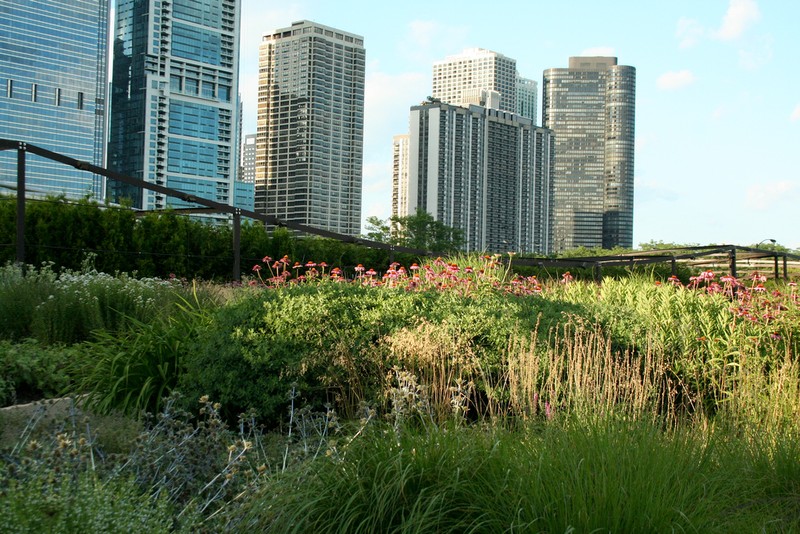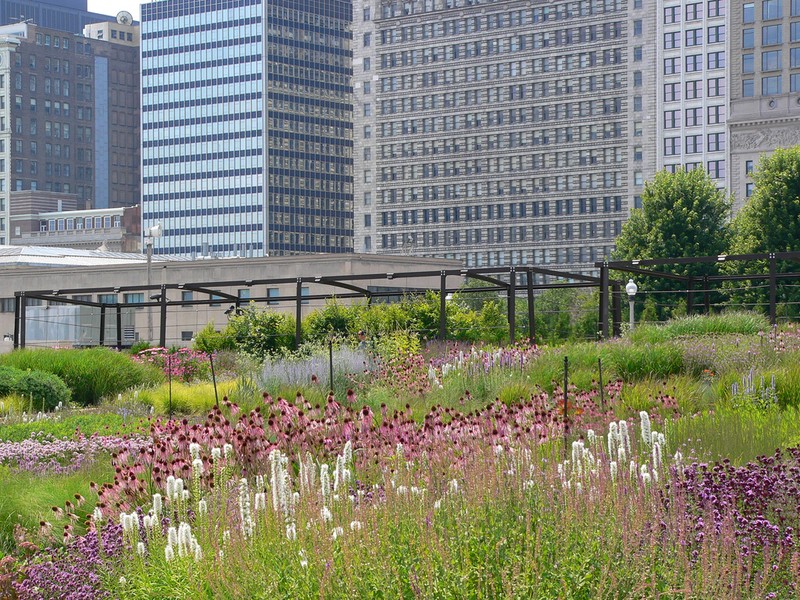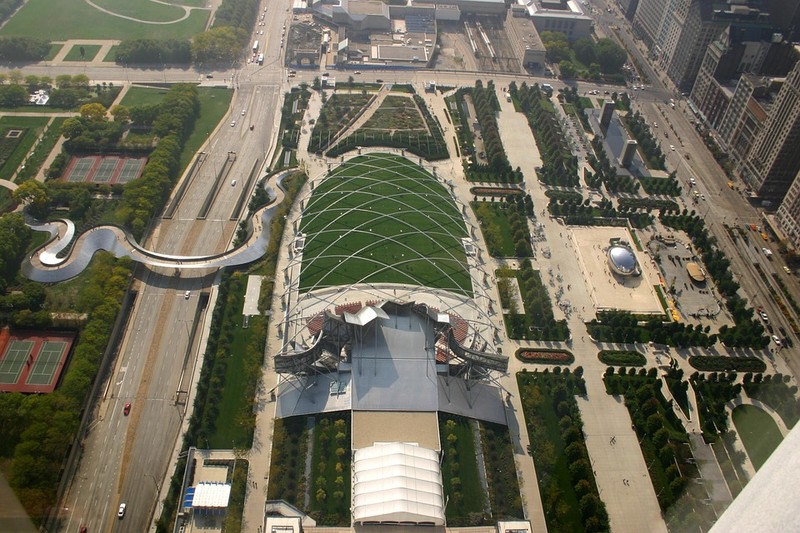Lurie Garden
Introduction
Text-to-speech Audio
Images



Backstory and Context
Text-to-speech Audio
The people who created the garden were perennial plant designer Piet Oudolf, landscape architect Kathryn Gustafson, and set designer Robert Israel who collaborated and aimed to relate their plants of botanic history to the city of Chicago. It was one of the first projects Piet Oudolf has established in North America. He would later become famous for the garden’s design and continued to collaborate in other public projects such as Battery Park in New York. The purpose of the garden’s design is to reflect Chicago’s history through the its native and local resources. It builds from Chicago's marsh origins and will continuously rise higher. Lurie Garden was built on top of an underground parking garage and is over-structured with risen landforms. It was mainly made from limestone, granite, and geofoam that were used for landforms or curbing. Other materials include Naval Brass, patinized architectural bronze, and powder coated steel.
The garden is split into two different sections called the Dark and Light plate. The Light plate is a warm and bright meadow that has raised pathways for visitors to walk on. It has a more controlled structure than the Dark plate. The Dark plate is an oak marsh along a river that is punched up from below; it has an array of prosperous plants. Moreover, it was previously a shoreline at the Chicago river. The two plates are separated by the Seam, a wooden boardwalk that hovers over a waterway. A couple of popular features are the fifteen-foot Shoulder Hedge, Extrusion Plaza, and the West Hedge. The Shoulder Hedge surrounds the garden's interior and serves to protect the plants from heavy crowds of pedestrians. The Extrusion Plaza connects Monroe street and the Exelon Pavilions and allows visitors to freely move to the Pritzer Pavilion and other sections of Millennium Park. The West Hedge visually presents a Greek story and details the futuristic theme of the garden. In the evenings lights would illuminate the garden and create a beautiful and captivating experience for the tourists.
Sources
“ASLA 2008 Professional Awards.” American Society of Landscape Architects, 21 Feb. 2019, www.asla.org/awards/2008/08winners/441.html.
Way, Thaisa. “Chicago Fell in Love/ The Lurie Garden by GGN.” Academia.edu - Share Research, Sept. 2014, www.academia.edu/10247799/Chicago_Fell_in_Love_The_Lurie_Garden_by_GGN.
Green, Gateway. “The Lurie Garden of Chicago's Millennium Park.” Chicago Gateway Green, 25 Aug. 2017, www.gatewaygreen.org/the-lurie-garden-of-chicagos-millennium-park/.
Schulze, Franz. “Sunday Afternoon in the Cyber-Age Park.” Art in America 92, no. 10 (November 2004): 66–69. https://ezp3.sxu.edu/login?url=http://search.ebscohost.com/login.aspx?direct=true&db=a9h&AN=14964502&site=ehost-live&scope=site.
